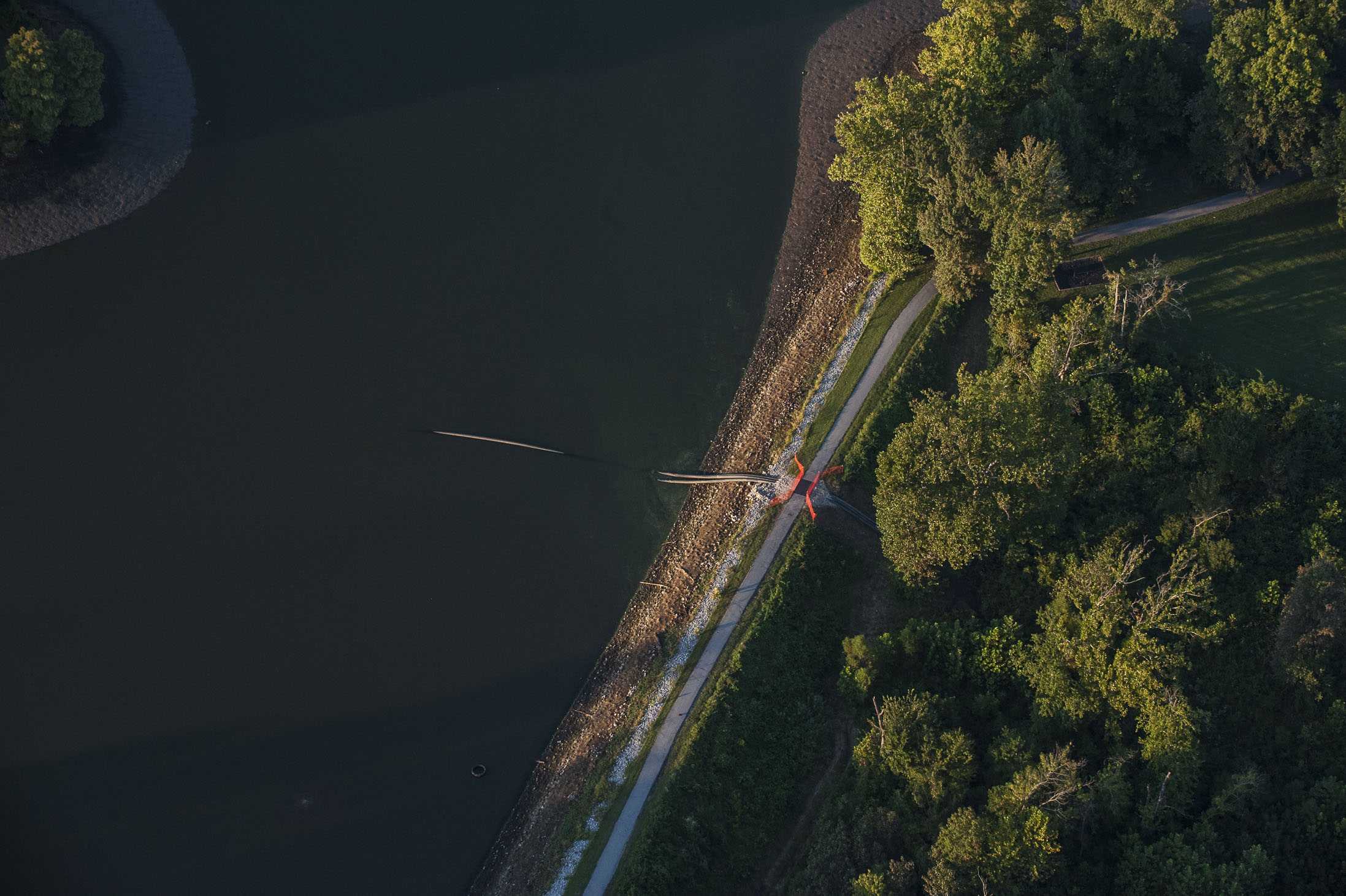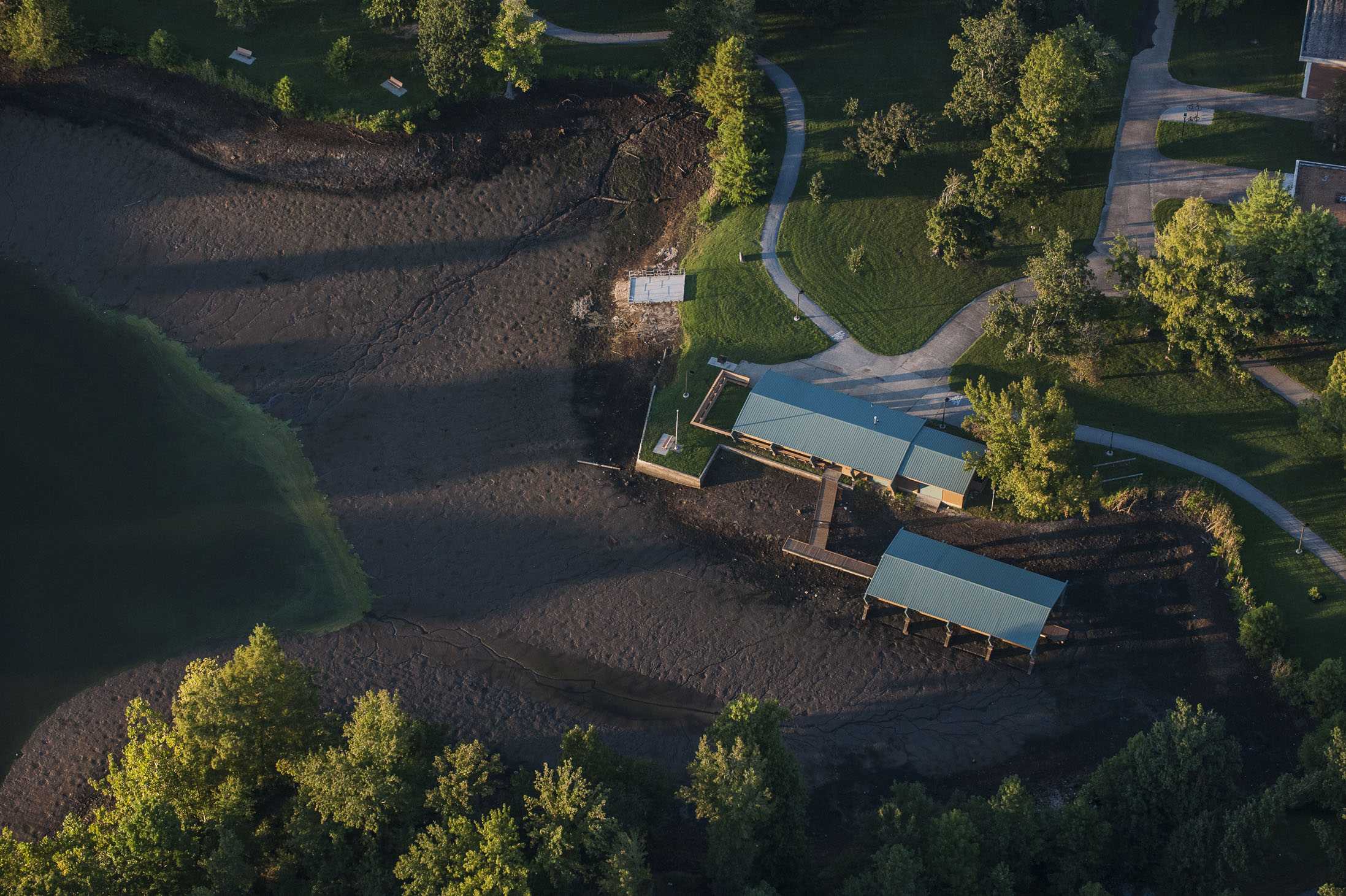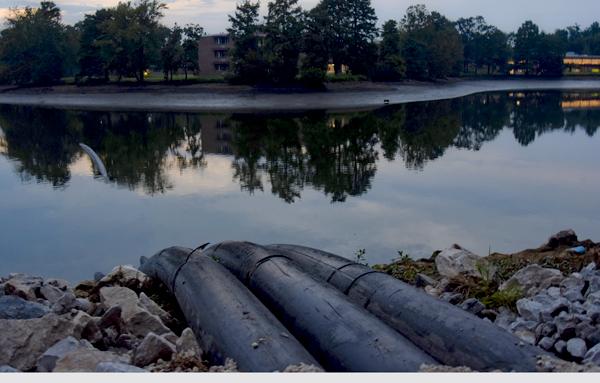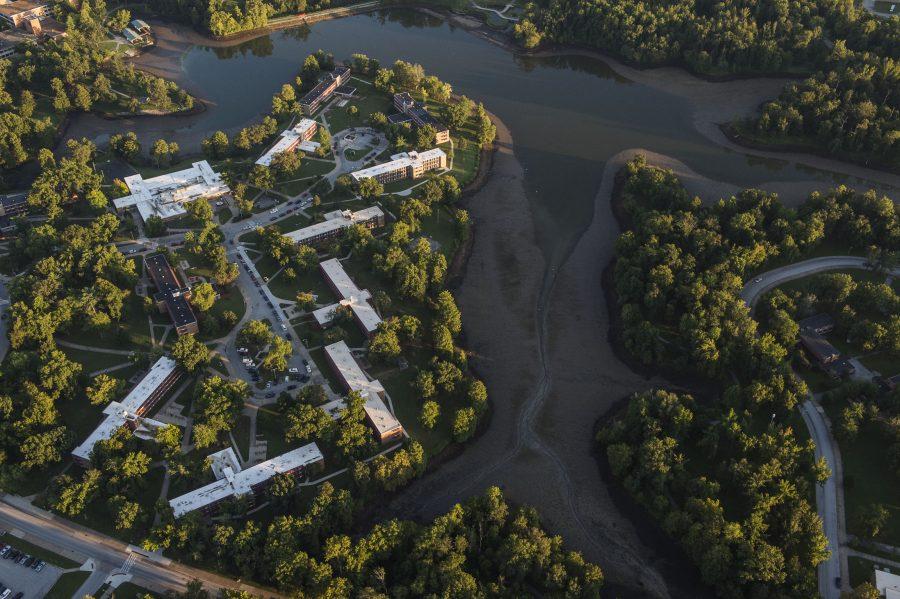Campus Lake drainage won’t harm local creek, SIU official says
September 16, 2016
SIU is paying a local contractor $350,000 to remove roughly 46 million pounds of material from Campus Lake, a university official said.
Earlier this month, contractors started draining Campus Lake into Piles Fork Creek in an effort to restore the body of water near Thompson Point to a healthier state after years of toxic algae growth.
This action raised a number of questions among members of the community concerning the effects the decision would have on the creek.
Advertisement
Because of high levels of the toxic blue-green algae called cyanobacteria, the university has closed the lake on and off for the past three years. After months of testing and planning, the decision was made to syphon water from the lake across a dam and into Piles Fork Creek, said Kevin Bame, vice chancellor of administration and finance.
This allows the university to then remove build-up from decomposing plants, which help feed the cyanobacteria, from the shore.

But the contaminated water draining into Piles Fork Creek — which snakes through Carbondale leading to the Big Muddy River and eventually feeds into the Mississippi River — shouldn’t harm any other water sources, Bame said.
“As the water comes tumbling out, it’s a lot cooler because when the water gets sprayed out into the air it cools off,” zoology professor Marjorie Brooks said. “[This] actually discourages cyanobacteria from growing because they live off of warm, still water.”
To provide further reassurance, she said cyanobacteria tends to float on top of the water. The water drained from the lake was pulled from the lower strata of the body.
As of Thursday, the siphons leading from the now barren-looking lake began to shut down.
“From a biological perspective, the project is progressing extremely well,” Brooks said. “The decaying compost that contributed high nutrients [for the cyanobacteria] has remained rafted up along the shorelines.”
Advertisement*

If it doesn’t rain too much, it will take one or two weeks for the toxic waste materials on the now visible shorelines to dry out enough to be removed, Bame said.
The clean-up will begin at Thompson Point and move west, heading toward the Campus Lake boating dock, he said.
“We believe we have a reasonably good estimate on how many tons will be removed,” said Bame, adding that the university paid for up to 23,000 tons to be removed. “As of right now, we do not have any more funding going towards the lake than the $350,000. So if we reach our ending dollar and it is not entirely finished, then the project will have to end there.”
Then the lake can begin the process of restoring itself.

But until then, other changes are likely to take place at the recreational site.
The six to eight foot decrease in water level — revealing about 20 acres of shoreline — might also increase the amphibian population in the lake, Brooks said.
“This is going to create a better wetland back there, which we believe will help spike amphibian life for a short period of time and bring more frogs to the area,” she said.
Staff writer Shyanne Jasper can be reached at sjasper@dailyegyptian.com or on Twitter @sjasper_DE.
To stay up to date with all your SIU news, follow the Daily Egyptian on Facebook and Twitter.
Advertisement









